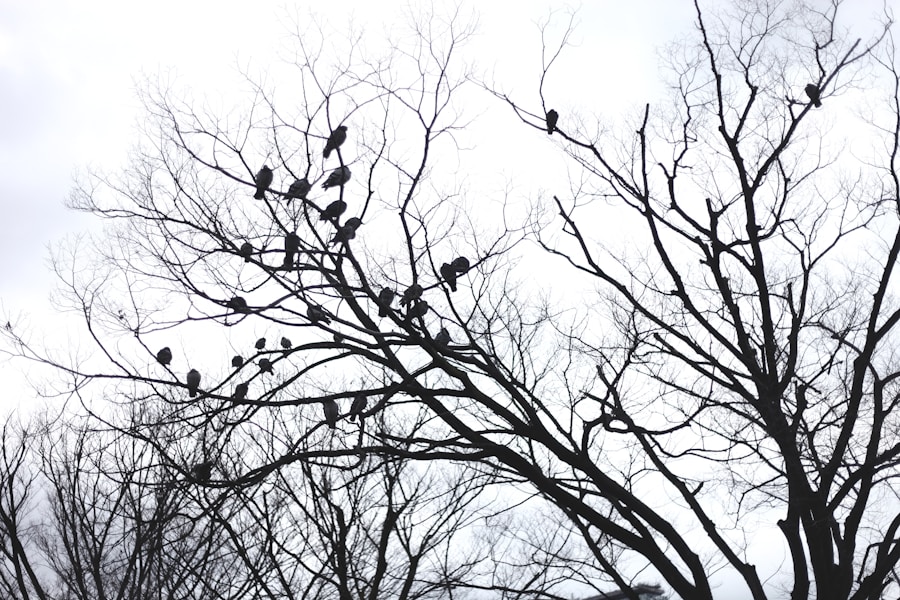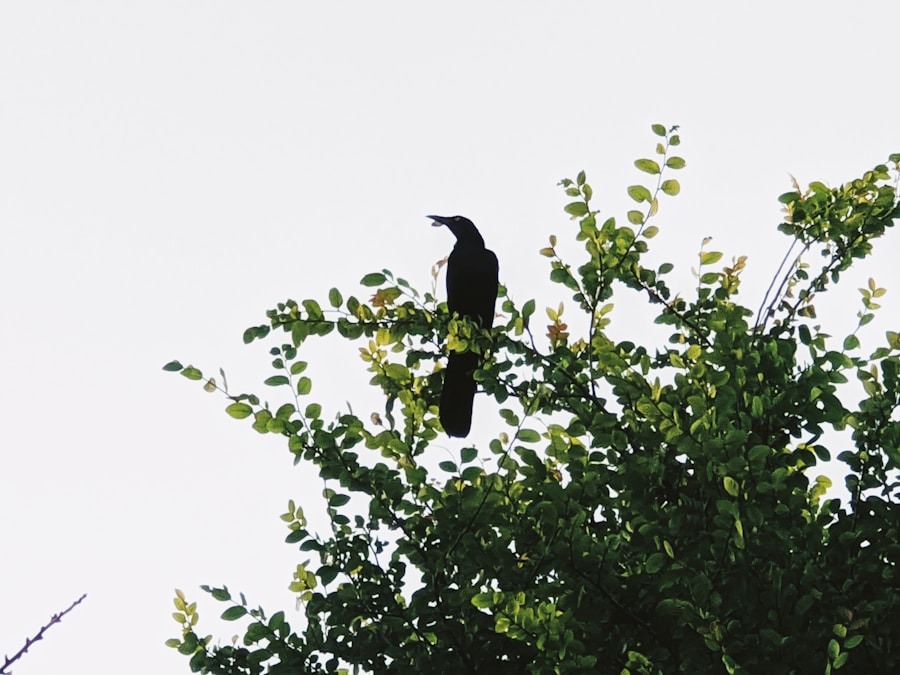Emily Dickinson, one of the most significant figures in American poetry, is renowned for her unique style, innovative use of language, and profound exploration of themes such as nature, death, and the human experience. Born in Amherst, Massachusetts, in 1830, Dickinson lived a reclusive life, spending much of her time in her family home.
Among her many poems, “A Bird Came Down” stands out as a vivid portrayal of the natural world and the delicate interplay between humanity and nature. In “A Bird Came Down,” Dickinson captures a moment of quiet observation, inviting readers into an intimate encounter with a bird as it navigates its environment. The poem is notable for its rich imagery and the way it encapsulates the tension between the beauty of nature and the inherent dangers that exist within it.
Through her keen observations, Dickinson not only illustrates the behavior of the bird but also reflects on broader themes of existence, vulnerability, and the relationship between humans and the natural world. This poem serves as a microcosm of Dickinson’s larger body of work, which often grapples with the complexities of life and the intricate connections that bind all living beings.
Key Takeaways
- Emily Dickinson is a renowned American poet known for her unique style and introspective themes, with “A Bird Came Down” being one of her notable works.
- The poem’s imagery and symbolism, such as the bird and the landscape, reflect Dickinson’s fascination with nature and her exploration of the human experience.
- Nature plays a significant role in Dickinson’s poetry, serving as a source of inspiration and a reflection of the human condition.
- “A Bird Came Down” can be compared to other Dickinson poems, such as “Hope is the Thing with Feathers,” to explore recurring themes and motifs in her work.
- Transcendentalism, a philosophical movement emphasizing the spiritual and natural world, influenced Dickinson’s writing and is evident in the themes and imagery of “A Bird Came Down.”
- “A Bird Came Down” has left a lasting legacy in literature, showcasing Dickinson’s ability to capture the beauty and complexity of the natural world and the human experience.
Analysis of the Poem’s Imagery and Symbolism
The imagery in “A Bird Came Down” is strikingly vivid, allowing readers to visualize the scene with clarity. Dickinson begins by describing the bird’s actions as it comes down to the ground, where it interacts with its surroundings. The opening lines depict the bird as a creature of instinct, highlighting its natural behaviors: “He bit an Angleworm in halves / And ate the fellow, raw.” This raw depiction of nature emphasizes the bird’s primal instincts and survival mechanisms.
The choice of words like “bit” and “ate” conveys a sense of immediacy and realism, immersing readers in the rawness of the moment. Symbolism plays a crucial role in enhancing the poem’s themes. The bird itself can be seen as a symbol of freedom and the untamed aspects of nature.
Its actions reflect both beauty and brutality, illustrating the duality present in the natural world. As Dickinson describes how the bird “stirred his Velvet Head,” she evokes a sense of gentleness that contrasts sharply with its predatory behavior. This juxtaposition invites readers to contemplate the complexities of existence—how beauty can coexist with violence and how life is often a delicate balance between these opposing forces.
The Role of Nature in Dickinson’s Poetry

Nature is a central theme in Emily Dickinson’s poetry, serving as both a backdrop for her explorations and a source of inspiration. Her deep appreciation for the natural world is evident in many of her works, where she often reflects on its beauty, mystery, and power. In “A Bird Came Down,” nature is not merely a setting; it is an active participant in the poem’s narrative.
Dickinson’s keen observations reveal her understanding of nature as a living entity that interacts with both itself and humanity. In addition to being a source of inspiration, nature in Dickinson’s poetry often serves as a mirror for human emotions and experiences. The bird’s actions can be interpreted as a reflection of human vulnerability and the instinctual drives that govern life.
Dickinson frequently uses natural imagery to explore themes such as isolation, mortality, and transcendence. By engaging with nature, she invites readers to consider their own place within the larger tapestry of existence. The interplay between humanity and nature becomes a recurring motif in her work, emphasizing the interconnectedness of all living beings.
Comparing A Bird Came Down to Other Dickinson Poems
When comparing “A Bird Came Down” to other poems by Emily Dickinson, one can observe both thematic similarities and stylistic differences. For instance, in “I Heard a Fly Buzz—when I Died,” Dickinson similarly employs vivid imagery to explore themes of mortality and the unknown. Both poems feature moments of stillness and observation, yet while “A Bird Came Down” focuses on the immediacy of life in nature, “I Heard a Fly Buzz” delves into the moments surrounding death and the transition from life to afterlife.
Another poem that resonates with “A Bird Came Down” is “A Narrow Fellow in the Grass,” where Dickinson again uses nature to explore complex emotions. In this poem, she personifies a snake as a metaphor for danger lurking within beauty—a theme that echoes through “A Bird Came Down.” Both poems highlight Dickinson’s ability to capture fleeting moments in nature while simultaneously probing deeper philosophical questions about existence and human experience.
The Influence of Transcendentalism on Dickinson’s Writing
Transcendentalism, a philosophical movement that emerged in the early 19th century, significantly influenced Emily Dickinson’s writing.
Figures such as Ralph Waldo Emerson and Henry David Thoreau championed these ideas, advocating for a deep connection with nature as a means to achieve spiritual enlightenment.
Dickinson’s poetry often reflects these transcendentalist ideals, particularly in her exploration of nature as a source of wisdom and insight. In “A Bird Came Down,” one can see traces of transcendentalist thought through Dickinson’s portrayal of the bird as an embodiment of natural instinct and freedom. The poem suggests that there is profound meaning to be found in observing nature closely—an idea central to transcendentalism.
By engaging with the bird’s actions, Dickinson invites readers to consider their own relationship with the natural world and to seek understanding through direct experience rather than through abstract reasoning.
The Legacy of A Bird Came Down in Literature

The legacy of “A Bird Came Down” extends far beyond its initial publication; it has become an integral part of Emily Dickinson’s oeuvre and continues to resonate with readers today. The poem has been analyzed extensively in literary circles for its rich imagery, complex themes, and innovative use of language. Scholars have noted how Dickinson’s ability to capture fleeting moments in nature speaks to universal human experiences, making her work timeless.
Moreover, “A Bird Came Down” has influenced countless poets and writers who have followed in Dickinson’s footsteps. Its exploration of nature’s beauty intertwined with its inherent dangers has inspired contemporary poets to engage with similar themes. The poem serves as a reminder that literature can encapsulate profound truths about existence through simple yet powerful observations.
As readers continue to discover Dickinson’s work, “A Bird Came Down” remains a poignant example of how poetry can illuminate the complexities of life and foster a deeper appreciation for the world around us.
In Emily Dickinson’s poem “A Bird Came Down,” the beauty and mystery of nature are vividly portrayed through the observation of a simple bird. This theme of nature observed is also explored in the article Nature, Scope, and Characteristics of Indian Philosophy, which delves into the deep connection between Indian philosophy and the natural world. Just as Dickinson’s poem captures the essence of nature through the lens of a bird, this article examines how Indian philosophy reflects the harmony and interconnectedness of all living beings with the environment. Both works invite readers to contemplate the wonders of the natural world and the profound insights it can offer.






















+ There are no comments
Add yours